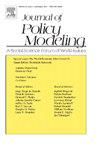模拟新贸易战对地区的影响
IF 3.1
2区 经济学
Q1 ECONOMICS
引用次数: 0
摘要
新冠肺炎疫情和近期地缘政治事件引发新一轮保护主义浪潮。特朗普重返白宫,一场新的贸易战刚刚开始。为了解决贸易政策的地域效应,本研究量化了美国在疫情前对欧盟宣布的两项重大保护主义措施的影响:世贸组织内的波音-空客贸易争端和对汽车行业征收25%的关税。结合局部均衡和多区域投入产出分析,计算了297个nut -2欧洲区域的影响。研究结果显示,新关税将对欧洲经济产生重大负面影响,且影响在不同地区的分布不均匀。受影响最严重的地区是那些高度专业化的目标产品,如汽车和航空航天零部件,以及那些深度融入欧洲价值链的地区,受到了重大的间接影响。这项工作强调需要在欧洲、国家和区域各级采取有针对性的政策干预措施,以减轻这些不利影响。主要政策建议包括制定应急计划,促进部门和地域多样化,以及加强欧洲内部贸易关系。研究结果强调了欧盟参与全球贸易谈判以保护其经济利益和支持脆弱地区的战略重要性。这项研究还想说明特朗普刚刚宣布的一些针对欧盟的新关税的潜在影响,这些关税将在他第二任期的头几年实施。本文章由计算机程序翻译,如有差异,请以英文原文为准。
Modelling regional exposure to new trade wars
The COVID-19 pandemic and recent geopolitical events have triggered a new wave of protectionism. The return of Trump to the White House, a new trade war has just started. With the aim of addressing the territorial effect of trade policy, this study quantifies the effects of two significant protectionism measures announced by the US against the EU before the pandemic: the Boeing-Airbus trade dispute within the WTO and a 25 % tariff on the automotive sector. The impacts are calculated for 297 NUTS-2 European regions combining partial equilibrium and multiregional input-output analysis. The results reveal that the new tariffs would significantly negatively impact the European economy, with unevenly distributed effects across regions. The most affected regions are those heavily specialized in targeted products, such as automotive and aerospace components, and those deeply integrated into European value chains, experiencing substantial indirect impacts. This work underscores the need for targeted policy interventions at the European, national, and regional levels to mitigate these adverse effects. Key policy recommendations include developing contingency plans, promoting sectoral and geographical diversification, and strengthening intra-European trade relations. The findings highlight the strategic importance of the EU’s engagement in global trade negotiations to protect its economic interests and support vulnerable regions. This study wants also to illustrate the potential effects of some of the new tariffs just announced by Trump against the EU to be applied in the first years of his second term.
求助全文
通过发布文献求助,成功后即可免费获取论文全文。
去求助
来源期刊

Journal of Policy Modeling
ECONOMICS-
CiteScore
6.20
自引率
11.40%
发文量
76
期刊介绍:
The Journal of Policy Modeling is published by Elsevier for the Society for Policy Modeling to provide a forum for analysis and debate concerning international policy issues. The journal addresses questions of critical import to the world community as a whole, and it focuses upon the economic, social, and political interdependencies between national and regional systems. This implies concern with international policies for the promotion of a better life for all human beings and, therefore, concentrates on improved methodological underpinnings for dealing with these problems.
 求助内容:
求助内容: 应助结果提醒方式:
应助结果提醒方式:


